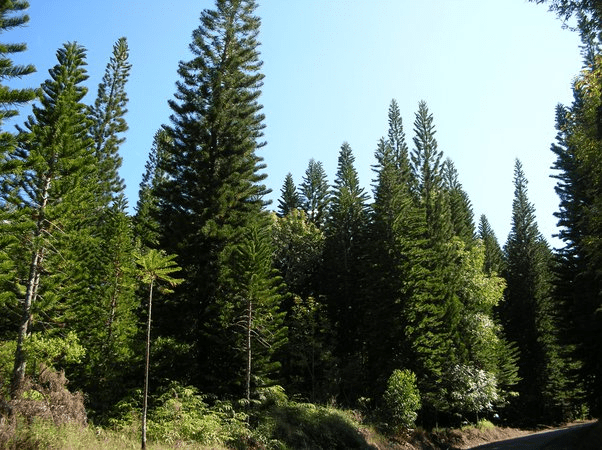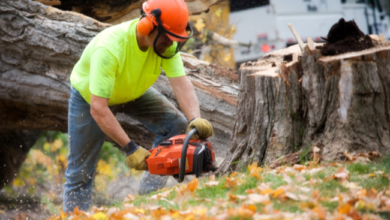The Fascinating World of Conifer Trees and its Types: A Comprehensive Guide.

Conifer Trees
Conifer trees are a group of trees and shrubs that belong to the division Pinophyta, which consists of about 630 species. These trees are characterized by their needle-like or scale-like leaves, commonly found in temperate and boreal regions.
The Fascinating World of Conifer Trees:
Conifer trees are a fascinating and diverse group of trees that have adapted to thrive in some of the harshest environments on Earth. These trees are characterized by their needle-like or scale-like leaves, found in almost every corner of the globe.
One of the most remarkable things about conifer trees is their ability to survive in cold and dry environments. Many conifers are found in boreal and temperate regions, where they have evolved adaptations such as deep roots, thick bark, and waxy needles to help them survive long, cold winters and dry summers.
Ecological Importance
Conifers also play an essential role in many ecosystems. They provide various wildlife habitats, including birds, mammals, and insects. They are also a vital food source for many animals, including squirrels, chipmunks, and deer.
In addition to their ecological importance, conifers have a wide range of practical uses for humans. Their wood is prized for its strength, durability, and resistance to rot and insects. It is used in construction, furniture-making, and many other applications. Conifers are also used to produce essential oils, perfumes, and other fragrances.
Types of Conifer Trees:
Here are some of the most common types of conifer trees:
Pine Trees:
Pine trees are some of the most recognizable and commonly known conifer trees. They have long, thin needles and produce woody cones that contain their seeds. They are found worldwide, with many species in North America, Europe, and Asia.
Spruce Trees:
Spruce trees are also commonly found in temperate and boreal regions, with short, stiff needles growing all around the branch. They are usually taller than pine trees and produce cones that hang downward.
Fir Trees:
Fir trees are often confused with spruce trees because they have similar needle-like leaves, but fir trees have softer, flat, and more flexible needles. They also produce cones that stand upright on the branches.
Cedar Trees:
Cedar trees are known for their robust, fragrant wood and distinctive, scale-like leaves. They are often used for their timber in construction and furniture-making, and they are also used to make essential oils and perfumes.
Cypress Trees:
Cypress trees are often found in wetland areas with tiny, scale-like leaves arranged in opposite pairs. They are typically tall and have a conical shape.
Juniper Trees:
Juniper trees are known for their bluish-gray berries that are used to flavor gin and other spirits. They have needle-like leaves that grow in pairs and produce small, berry-like cones.
Yew Trees:
Yew trees are known for their dense, dark green foliage and bright red berries. They are often used as ornamental trees in gardens and parks, and they are also used to make medicine.
These are just a few examples of the many different conifer tree types. Each species has unique characteristics and uses essential in their respective ecosystems.
You can also read: Ash Tree Types
The Importance of Conifer Trees in Landscaping:
Conifer trees are widely used in landscaping for a variety of reasons. Here are some of the ways that conifer trees are essential in landscaping:
Year-Round Interest:
Conifer trees are evergreen, meaning they keep their foliage all year long. This makes them valuable in landscapes because they provide year-round interest and color, even in winter when many other plants are dormant.
Variety of Forms:
Conifer trees come in various shapes and sizes, from tall, narrow columnar forms to low, spreading shrubs. This makes them versatile in landscaping, as they can create multiple effects, from hedges and screens to focal points and specimen plants.
Low-Maintenance:
Conifer trees are generally low-maintenance, requiring little pruning or care beyond occasional watering and fertilization. This makes them ideal for busy homeowners and commercial landscapers who want attractive plants that require minimal upkeep.
Environmental Benefits:
Conifer trees provide several environmental benefits, including erosion control, air purification, and carbon sequestration. They are also often used in windbreaks and shelterbelts to protect crops and livestock from harsh weather conditions.
Aesthetic Appeal:
Conifer trees have a distinctive and appealing appearance that many people find attractive. Their unique foliage and beautiful forms make them popular for landscape designers and homeowners who want to create a visually striking and memorable outdoor space.
Overall, conifer trees are an essential and valuable component of landscaping, offering a range of benefits and aesthetic qualities that make them a popular choice for many different types of landscapes and garden styles. The world of conifer trees is fascinating, full of diversity, adaptability, and ecological and practical importance. Whether you are a nature lover, a woodworker, or simply someone who appreciates the beauty of trees, there is much to learn and understand about these remarkable plants.
welcome to my site, I am Faisal I have 3 years of experience in guest posting. retund is a guest posting website!
